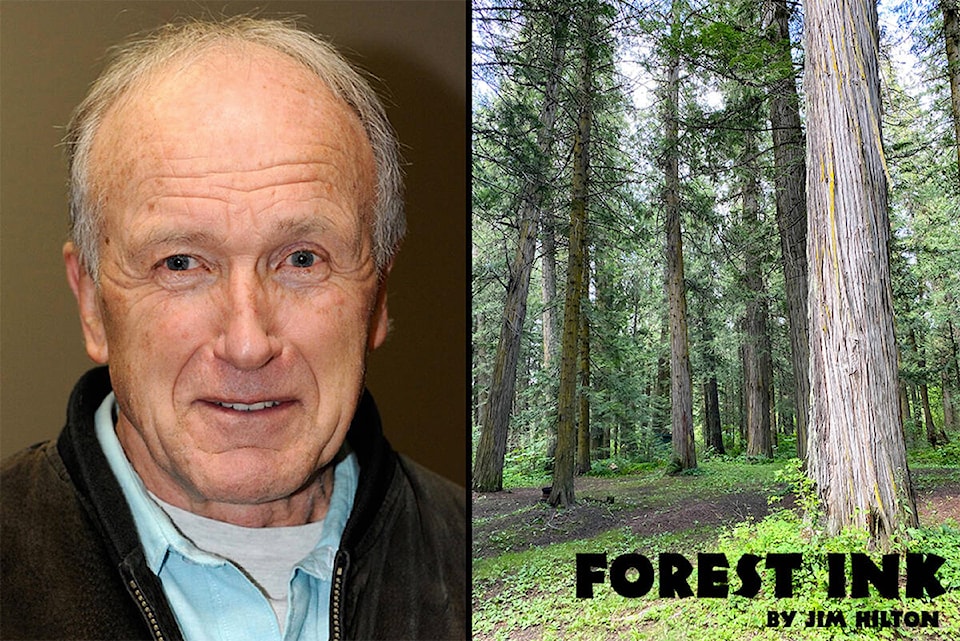There is usually a greater production and species diversity where two ecosystems meet.
For example, where a grassland or forest meets a waterbody like a river or lake edge both ecosystems benefit from each other. A stream benefits from the adjacent forest due to shading along with nutrients and the forest plants on the edge have a more consistent water source.
I had the opportunity to study this phenomena while kayaking in a Chilcotin lake last week. These edge ecosystems have been studied extensively and are described as the littoral zone or (near shore) which is defined as the part of a sea, lake or river that is close to the shore which has a high water mark rarely inundated along with shoreline areas that are permanently submerged. A steep drop off into the waterbody usually has little diversity while a gradual drop often has a wide variety of water plants. In my case the willows were on the edge supplying some shade to the adjacent water tolerant shrubs, grasses, sedges and bull rushes.
As the water depth increases, floating plants like yellow pond lilies and bladder warts are still rooted to the bottom but can better withstand a fluctuating water table.
The outer edge contained long slender plants which barely reached the surface and often caused fishermen to snag there lures if they get too close. As I slowly moved through the floating plants I could see a wide variety of small fish in schools of hundreds taking refuge from the big fish, loons and kingfishers. As expected the greatest number and variety was from the insects that included diving beetles, water striders, dragonflies and damselflies. Since returning home I have been consulting some references to better identify many plants and animals that I was not familiar with. A book by Dorothy Hinshaw Patent entitled “Biodiversity” describes how we have lost much of the planet’s diversity through urban expansion along with poor logging and agriculture practices. The 1996 publication lists some success stories but unfortunately the last two decades of population increases has lead to many more losses especially in tropical areas. The author describes some special areas in Costa Rica where she was inspired to finish writing her book. While I would eventually like to visit some of the tropical areas again, there are many special areas in B.C. like the one I tried to describe above. Trying to capture the essence of these special experiences with words is not easy but I think Toko-pa Turner did a good job in her book Belonging.
“Like an idyllic valley cradled on all sides by mountains who protect it from influence and encroachment, there is a place within each of us that is in a continual dance of belonging together. All of the species of trees and birds, insects, frogs, fungi and soil are necessary ingredients in this exquisite blend of chaotic integrity. Similarly there is a place within us where everything should be allowed to flower in its own time and way. The way of nature is to accept everything just as it is. Whether with fruits or blossoms, compost or storms, everything has something to contribute to the whole.”
I can relate to the chaotic side of nature as my idyllic lake experience is suddenly interrupted when a storm quickly arrives with wind, rain, lightning and hail thrown in for good measure.
Do you have a comment about this story? email:
editor@wltribune.com
Like us on Facebook and follow us on Twitter.
